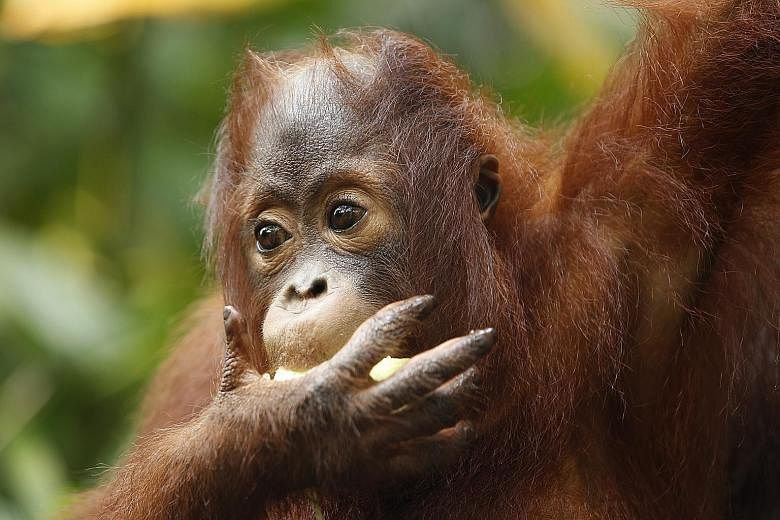GENEVA • The Bornean orang utan is on the verge of extinction, a top conservationist body has said, also warning that the world's biggest fish, the whale shark, and a hammerhead shark species were endangered.
In an update to its "Red List" of threatened species, the International Union for the Conservation of Nature (IUCN) said growing human pressure was driving the three species ever closer to destruction.
"It is alarming to see such emblematic species slide towards extinction," Dr Jane Smart, head of IUCN's Global Species Programme, said in a statement on Friday.
The Bornean orang utan, which along with its cousin the Sumatran orang utan are Asia's only great apes, has moved from being classified as "endangered" to "critically endangered" - "only one step from going extinct", IUCN said.
"As orang utans are hunted and pushed out of their habitats, losses to this slow-breeding species are enormous and will be extremely difficult to reverse," Dr Erik Meijaard, an IUCN assessor of the species, said in the statement.
Around 100,000 of these great apes are estimated to live on the island of Borneo, which is divided between Malaysia, Brunei and Indonesia, down from 288,500 in 1973 and with their numbers expected to shrink to 47,000 by 2025.
The apes have seen their habitat shrink dramatically as the island's rainforests are increasingly turned into oil palm, rubber or paper plantations.
Compounding the loss of habitat, surveys indicate 2,000 to 3,000 of the orang utans have been killed every year for the past four decades by hunters and sometimes villagers who view them as pests.
That represents a loss of as many as 66,570 individuals over a span of 40 years, IUCN said, warning that the great apes could be extinct within 50 years.
IUCN also warned that the slow-moving whale shark, which has been known to measure up to 12.65m, had been placed on the "endangered" list.
The shark is fished for its meat as well as its fins which are used to make soup in some parts of Asia, but is also often caught by accident by fishermen casting nets for tuna.
IUCN said unregulated fishing was also behind the fast-falling numbers of the winghead shark, a distinctive species of hammerhead shark, which had also been moved from being considered "near threatened" to "endangered".
The group said it was difficult to estimate how many of the sharks remain, but said there is a sharp drop in the numbers turning up.
AGENCE FRANCE-PRESSE



